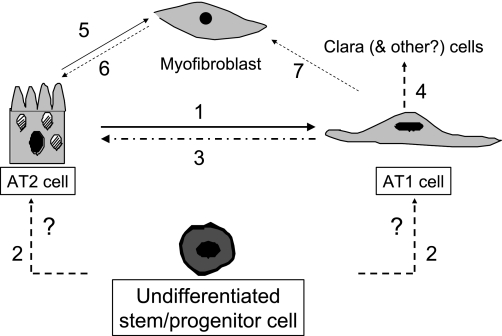Fig. 1.
Alveolar epithelial cell plasticity in lung repair. The currently accepted paradigm is that, following injury, alveolar epithelial type II (AT2) cells proliferate and both self-renew and serve as precursors for replacement of AT1 cells (1). A less-differentiated bone marrow or lung-derived stem/progenitor cell in the adult that can give rise to either or both cell types has not been identified to date (2). AT1 cells in primary culture reacquire phenotypic characteristics of AT2 cells and may be induced to proliferate under appropriate experimental conditions (3). AT1 cells in vitro can be induced to express CC10, a marker of Clara cells (4). AT2 cells have been shown to undergo epithelial-mesenchymal transition to give rise to fibroblasts/myofibroblasts in vitro and in vivo (5). Reversibility of this process (mesenchymal-epithelial transition) (6) and/or if AT1 cells can transition to myofibroblasts (7) remain to be determined.

